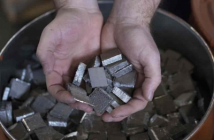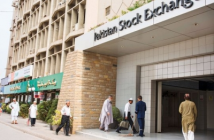By Susitha Fernando
Colombo, Jan 7 (IANS) When 2023 dawned, Sri Lanka breathed a sigh of relief as it marked the end of the most turbulent year since the island nation’s independence from British colonial rule in 1948.
What started with street fights and long queues for fuel and cooking gas in March, the tiny Indian Ocean island witnessed three Prime Ministers changing in a span of less than four months.
Gotabaya Rajapaksa, the most powerful President elected with a landslide 5/6 majority in 2019, was forced to flee from the
very people who chose him to be their leader.
The lone lawmaker, Ranil Wickremesinghe representing the country’s first political party — United National Party (UNP) — which did not get a single seat in the 2019 polls but was limited to a bonus seat, was elected as the powerful Executive President by a Parliamentary vote.
Wickremesinghe is now ruling and running the country joined with Rajapaksa’s party, Sri Lanka Podujana Peramuna (SLPP), the very opposition he contested in almost all his elections.
From Asia’s rice bowl to a begging bowl
The year with the worst-ever unprecedented economic crisis also saw days-long queues to buy fuel, cooking gas and milk powder and hours and hours of power cuts engulfing the entire nation into darkness both virtually and literally.
With no dollars to buy imported food, grocery racks in markets across Sri Lanka were left empty while ignorant political decision making to turn inorganic farming to organic overnight, left fields dry with no fertilizer.
For the first time in Sri Lanka’s history, the country in May 2022 declared a debt default on over $51 billion in foreign loans.
The dollar crunch led to a food crisis, turning once Asia’s rice bowl to a begging bowl that awaited food aid shipments reaching its ports.
The continued calamity, ended the World Bank Food Security update ruling in December that Sri Lanka was among the top 10 countries in the world affected most by high food inflation, with an annual inflation rate at 81 per cent.
The year-on-year headline inflation in November stood at 61 per cent.
Food inflation in urban areas around capital Colombo remained high at 73.7 per cent, according to the Colombo Consumer Price Index.
In its reports, the World Food Programme (WFP) said that more than three in 10 households or nearly 36 per cent were food-insecure; over seven in 10 households were adopting food-based coping strategies such as eating less; and a staggering eight in 10 households were turning to livelihood-based coping strategies such as selling assets.
Meanwhile, the Unicef in its latest report stated that Sri Lanka is in the middle of an acute economic crisis that is expected
to continue throughout 2023, with an estimated 6.2 million people, including 2.9 million children, in urgent need of humanitarian assistance in the New Year.
President Wickremesinghe, while admitting 2023 to be a critical year with his government backed by former Rajapaksa allies, is hoping to turn around the economy.
“2023 is also the 75th year of independence from the British Empire. Looking back, it is obvious that we have not done as well as other former colonies,” he said in his New Year’s address to the nation on January 1.
“I understand the great burdens that are placed on all of us and the setbacks that a majority of us have suffered due to the country’s abject economic collapse. Yet I believe that we have already gone through the worst of these times.
Now the question remains, is Sri Lanka on the right track to steer out of the economic crisis?
Evasive IMF bailout
All hopes for a quick economic turnaround depends on the International Monetary Fund’s (IMF) bailout package of $2.9 billion in four years sealed last September.
The staff-level pact with a 48-month arrangement under the Extended Fund Facility (EFF) is aimed at “restoring macroeconomic stability and debt sustainability, while safeguarding financial stability”, according to the global lender.
Before the IMF bailout, nearly $4 billion was received in rapid financial assistance from India, allocated within just six months from January 2022 that consoled Sri Lanka’s bleeding economic crisis.
The financial assistance included credit lines, currency swap arrangements and deferred import payments in addition to a number of warships carrying essential drugs that the hospitals of its southern neighbour was desperately awaiting.
On several intervals, India also intervened to see that fuel supply should be continued for power generation and transportation.
However, Sri Lanka currently faces debt to over 20 creditors, with China on the top with nearly $7.3 billion and accounting for 52 per cent of the total bilateral debt.
China is followed by Japan at $2.7 billion and India at $1.7 billion, and according to the Sri Lankan Finance Ministry, Japan accounts for 19.5 per cent and India 12 per cent of total bilateral debts.
For Sri Lanka to reach the IMF, settling loan restructuring plans with its creditors, especially with the three giants in Asia, is a must.
With historical, cultural and religious bonds, India was the first to start talks with the promise to support her crisis-hit neighbour.
Guided by the policies of debt relief of the Paris Club, a group of wealthy countries to which neither China nor India belongs, Japan has indicated its positive responses to Colombo.
But the IMF relief for Lanka is halted with China’s non-responsive attitude.
According to economists, reaching the IMF bailout too is hard as pre-conditions specially the crucial foreign debt restructuring program with foreign creditors more importantly with China.
“Sri Lanka was not able to get the consent of all the creditors for a possible debt restructuring because of the intransigence of the leading creditor, China, which holds about 52 per cent of the bilateral debt of the government,” says Dr W. A. Wijewardene, a leading economist and former Deputy Governor of the Central Bank of Sri Lanka.
China evades haircuts
According to Wijewardene, Beijing’s principle ‘s been not to have ‘haircut’ or not to go for a reduction in the principal or interest income but to give a new loan to settle the old loan, which is known as loan refinancing.
He analysed that President Wickremesinghe himself has revealed that the Chinese government seemed to have washed its hands and asked Sri Lanka to directly negotiate with the two creditors — China Exim Bank and China Development Bank — which are also wholly owned by the government in Beijing.
Sri Lanka was hoping that China would come to the table in October and then November, but had to forgo even the December deadline as Beijing was holding the 20th Communist Party Congress. Now it will be the first quarter of 2023, probably after March.
Awaiting with wishful thinking that Beijing would back the IMF bailout, Sri Lanka will fall into a deeper crisis in the coming months, according to independent economists like Dr. Wijewardene.
“If we look at the economy with the various parameters we are not yet out of the woods. We are still deeply mired in the crisis and we are heading towards a bigger crisis in a six-month time period,” Wijewardene told IANS.
“In my view, we need to get the IMF bailout package as early as possible. This would enable Sri Lanka to marshal additional resources from other sources. We are getting into a serious problem of maintaining our import programmes to satisfy imports like foods, medicine, fuel cooking gas plus raw materials for the manufacturing sector.”
He also said that some industries which depend on imported raw materials, are closing down due to lack of foreign exchange.
According to Wijewardene the biggest crisis the government is facing is its inability to maintain a mammoth annual expenditure which is about 9.7 trillion LKR or around $26.5 billion.
“Without cutting the expenditure across the board by about 50 per cent I don’t think there is potential in Sri Lanka to come out of this crisis,” he told IANS.
“Added to the local crisis is the global situation. The global situation is not favourable for Sri Lanka because of the Ukraine-Russia war and global recovery and what we export we won’t be able to sell.”
Battered by the 2019 Easter bombings and followed by the Covid-19 pandemic which started in early 2020, Sri Lanka’s tea and tourism industries have also been hit hard by the ongoing Russia-Ukraine war as the two countries consume most of Ceylon-tea brand and also account for a considerable number of tourist arrivals to the island nation.
Accounting for over a quarter of the total number of tourist arrivals, about 20,000 Ukrainians and Russians had arrived in Sri Lanka by January 2022.
With regards to tea, Sri Lanka had exported 4.2 million kg of tea to Ukraine in 2021, while Russia accounted for nearly $140 million of the total $1.3 billion tea exports.
Meanwhile, Wijewardene also warned that a stable economy in India is crucial for Sri Lanka as it would be a deadly blow if there was any crisis in the Indian economy.
“Our main trading partner in the region is India followed by China. If there is a problem in India we would have a huge problem,” he told IANS.
However, according to academic and economist Ahilan Kadirgamar what awaits Sri Lanka in 2023 is a doomsday prediction on its economy.
“Economic situation in 2022 was really devastating but the full implications of the crisis are likely to unfold in 2023,” Kadirgamar warned.
“The budget and the policies the government is taking forward are not addressing the crisis anyway; in fact, they are going to aggravate the crisis. The people are really going to have a gruelling time.”
Kadirgamar, also a senior lecturer at the University of Jaffna, the IMF bailout is not a solution for the crisis-ridden country.
“We are not going to reduce the capital that we owe even if we get the IMF agreement. We are likely to default in a couple of years and possibly go for another IMF agreement as it has happened in any other parts of the world,” he argued.
“If we assume that we can just go with business as usual with the IMF agreement and the debt restructuring, its going to be devastating for the people. Not only in terms of huge level of unemployment but even issues like starvation and serious food crisis.”
Sri Lanka’s crisis is to last at least for five to 10 years, he predicts.
“Globally with a huge downturn there is increased pressure on developing countries like ours. Sri Lanka is not the only country that is going through defaulting. We borrowed from Bangladesh and now it has gone to the IMF. Pakistan too has gone to the IMF,” the economist stated.
–IANS
sfl/ksk/





